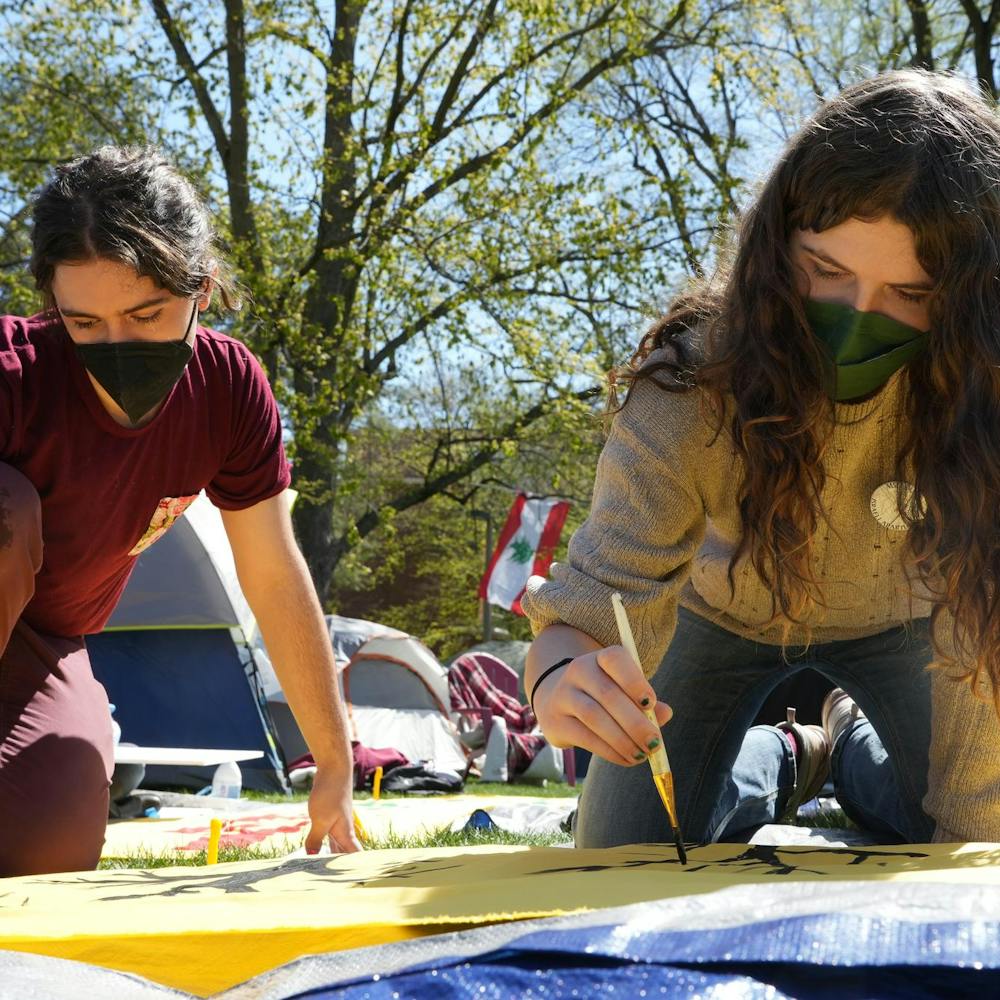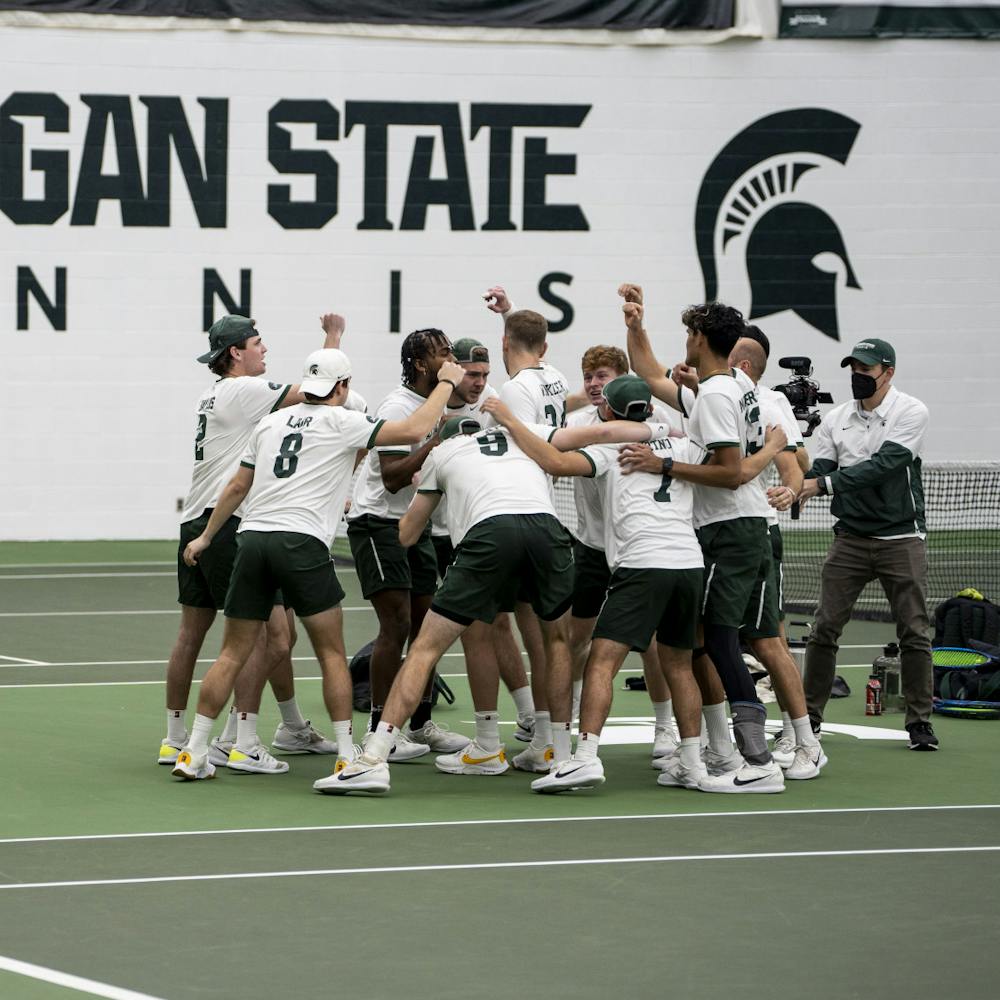Officially established in 1962, the voice library has since become the largest academic voice library in the United States, with more than 40,000 hours of primary-source material consisting mainly of speeches, interviews, lectures and performances dating back to 1888.
“Before photography, you never saw the real image of a person,” said Shaw, assistant head of the library. “The older (sound recordings) are important because they exist; otherwise you’re never going to hear the voices of people from history. You think you know what someone like Lincoln sounded like, but you don’t unless you hear it yourself.”
Sounds of history
Vincent, a sound engineer and pioneer in the field of recorded sound, began collecting sound in 1912 when he borrowed a recording device from his friend Charles Edison (the son of Thomas Edison, inventor of the phonograph) to record former President Theodore Roosevelt at his Oyster Bay, N.Y. home. By the 1920s, Vincent was an apprentice at the Edison Labs in New Jersey. In 1935, he opened his own recording studio, the National Vocarium, at Radio City in New York. There, Vincent worked to restore early Edison wax cylinders, a recording device patented in 1886.
In 1962, Vincent presented his sound collection of more than 8,000 voices to MSU. He then became head of the new National Voice Library at MSU, where he worked until his 1973 retirement. Under his direction, the collection grew to include more than 30,000 voices.
After Vincent’s retirement, Maurice A. Crane, a humanities professor at MSU since 1953, became the head of the voice library, encouraging its growth and availability to the public.
“The main thing he did was increase the size of the collection and he made it into a library,” Shaw said. “It was really more of an archive before; it was more restricted. We want people to listen to the material.”
Crane, who retired in 2000, increased the voice library’s collection of U.S. presidential speeches, labor history, popular culture and MSU history. He also was instrumental in opening the voice library’s card catalog to the public for bibliographic access. The library also became a lender of copies of items without copyright restrictions.
Archives of the past
Typical users of the voice library include undergraduate students and professors researching certain topics or writing papers, Shaw said.
“Not every sound recording has a transcript,” he said, which emphasizes the way hearing the voices of historical figures often can reinforce written information.
From the original card catalogue format, much of the voice library has been cataloged online, a format that increases its search capabilities.
“Access to primary spoken word enlivens the research process. The ability to have that material at our fingertips, on our campus, puts us head and shoulders above our peers,” said Shawn Nicholson, head of the Main Library’s Digital and Multimedia Center, which includes the voice library.
But there are some voices, like that of Mark Twain, that are lost forever because his voice was never recorded. Although one of the earliest portrayals of him was done by his neighbor, who presumably knew what he sounded like and influenced later portrayals of Twain, the modern world will never hear his voice, Shaw said.
“The novelty of the voices isn’t as important as the information, the idea of what the person really means,” he said.
Although most of the earliest recordings were of powerful people, such as politicians or those who were considered celebrities, Shaw said the recordings become more egalitarian over time. More recent recordings include everyday people.
Helpful in Hollywood
The voice library has even been useful to Hollywood.
Support student media!
Please consider donating to The State News and help fund the future of journalism.
Shaw said production companies working on historical pieces can request certain items, which can be loaned out through an interlibrary loan, or the library may even make a copy of the recording for their use.
When the PBS NOVA series was working on a documentary about Sigmund Freud, producers turned to the voice library for the use of one of the only known recordings of the Austrian psychologist speaking English.
“We don’t give it away or sell it — we make legal copies,” Shaw said, adding that the copies would then be returned the voice library.
Most recently, people working with actress Keira Knightley sought recordings of an Alabama accent. The voice library sent her copies of recordings of the accent, including that of actress Tallulah Bankhead. They’ve also sent voice examples to Colin Farrell for a film he was working on and to Leonardo DiCaprio before the filming of “The Aviator.”
“There’s not a lot of that … but for the actors, it’s about the sound of (the figure) speaking,” Shaw said. “(DiCaprio) learned to speak like Howard Hughes by listening to recordings of Howard Hughes.”
Technically speaking
With the use of an online search directory, the voice library has become even more accessible to everyone. Although many of the sounds in the voice library are recorded on analog tapes, some of the recordings are in MP3 form that are available on the voice library’s Web site, http://vvl.lib.msu.edu. There is enough room on the site for all the recordings to be put online, but Shaw said what is available is often determined by copyright concerns. The voices that are online are considered property of MSU, or public property, such as addresses of U.S. presidents.
The voice library also works with departments on campus and has become a repository for some oral history recordings, including those done by the African Studies Center ?and College of Human Medicine.
In addition to Shaw, the voice library employs a sound engineer and two students who work to gather new voices for the collection through TV and radio broadcasts, and, occasionally, YouTube, although the library is careful about using protected material.
“You might say that anyone can record off radio or TV, but they don’t,” Shaw said.
Sound engineer Rick Peiffer works with the various forms that the recordings are found in, often using custom turntables and other equipment in order to digitize the recordings so they can be preserved in as good of a condition as possible.
The voice library has an equipment room containing much of the technology needed to play the recordings — technology including 8-tracks or other forms that have become obsolete over the years. Peiffer said part of his job is to ensure the equipment is in working order, should the need for it arise.
And not all of the recordings the voice library acquires through donations, purchases or borrowing come in a workable form. Sometimes the recordings need to be cleaned of mold or mildew, or repaired somewhat — a difficult task because of the care needed to prevent the changing of the recordings.
“You want to make sure you’re keeping (the recording) how it was intended to sound,” said Peiffer, who has been at the voice library for about 30 years. “You could clean it up, but you want it recorded as it sounded at the time. The master recording should be faithful to what the original sounded like.”
Sound blast from the past
Madeline Schichtel, an English and telecommunication, information studies and media senior, has worked in the Digital and Multimedia Center since her freshman year, specifically with the voice library for three years.
When Schichtel first started, much of her job consisted of going over reel-to-reel tapes from various eras, including the 1920s. Lately, she’s been looking into recordings of Orson Welles’ 1938 “The War of the Worlds” radio broadcast as well as recording the recent presidential inaugural events. Although the task can be tedious, she said it is often interesting and sometimes even bizarre.
“Once there was this strange, psychedelic music from the ’60s with poetry readings. I was like ‘Why do we even have this?’ Then the file crashed and I had to start listening to it all over from the beginning,” Schichtel said.
Discussion
Share and discuss “Hearing history” on social media.






